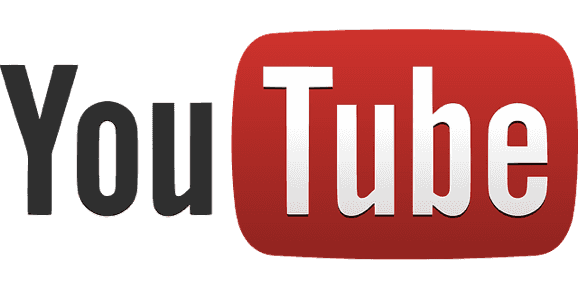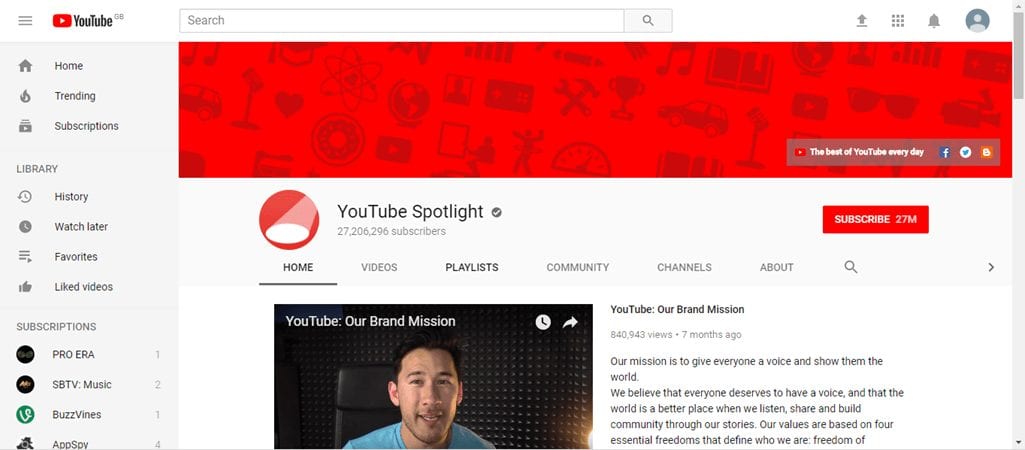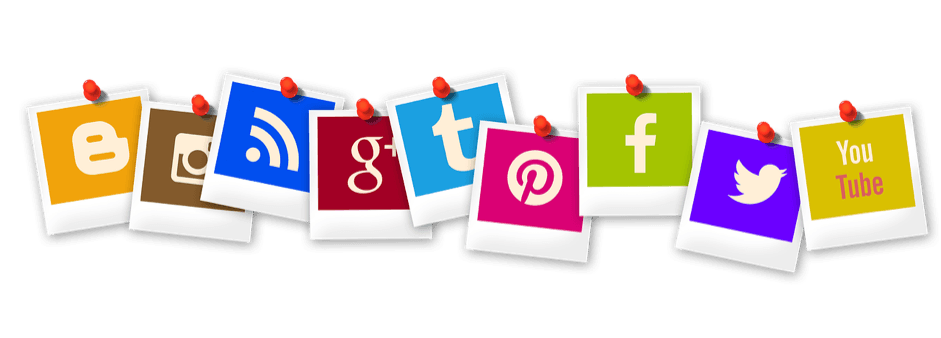Is YouTube an effective marketing tool for business in 2018? What are some of the drawbacks of YouTube, and how can this be detrimental for business? How can your company optimise SEO and what are some of the ROIs of the social media channel in 2018? These are just some of the many questions business executives may ponder before investing both time and effort into a social media campaign involving YouTube. If you want to know the answers, please read on below.
What is YouTube?
- 1 What is YouTube?
- 2 Facts and Stats about YouTube
- 3 Using YouTube for business
- 4 Negatives of using YouTube
- 5 YouTube a powerful marketing tool
- 6 Integrating YouTube with other social media channels
- 7 Opace customer experiences of YouTube
- 8 Search engine optimisation of YouTube
- 9 YouTube should have its place in organisational marketing strategy
- 10 Need more information? Contact Opace
YouTube is a free video-sharing site which allows users to watch, upload, rate, share, and comment on videos, as well as subscribe to other users. The first large-scale video-sharing site on the web and now arguably the most popular in 2018, an astounding 300 hours of video are uploaded to YouTube every minute, with content ranging from TV shows and music videos to educational videos and audio recordings.

YouTube can unleash the power of video marketing in your business
Facts and Stats about YouTube
YouTube was founded in 2005 by Steve Chen, Chad Hurley and Jawed Karim, who worked for PayPal at the time. It officially launched out as a beta version December 15th, 2005, and by July of 2006, 65,000 videos were being uploaded daily.
To put things in perspective, YouTube gets over one billion views per day, which means that if YouTube was a search engine, it would be the second largest, nearly 2X bigger than Bing and Yahoo search combined, and roughly a third the size of Google.com!

YouTube Spotlight – an example of how YouTube can be designed/configured
Using YouTube for business
Firstly, YouTube has extremely high traffic volumes – there are over 1.5 billion monthly active users watching over 1 billion hours of video daily in 2018. Businesses on YouTube have the potential of reaching their audience with ease, by creating videos and advertising on other user’s videos.
Furthermore, it is completely free to upload videos to the site. Of course, there will be costs associated with the creation and marketing of content, but to actually upload videos to YouTube in 2018 is 100% free. It is also extremely easy to upload content to YouTube and can be done in a number of different ways – please refer to this article by Christian Crawley for more information.
Secondly, YouTube’s advertising feature for businesses has made it extremely easy to advertise via the channel in 2018. There are a number of different advertising formats available for businesses, which include:
- Display ads – appear to the right of the video above the suggested videos list, in a range of different specs. Available on desktop only
- Skippable video ads –these are inserted before, during or after a video, and allow the user to skip the advert after five seconds. This form of advertising works on desktops, mobile devices, TVs and game consoles
- Bumper ads – these video adverts can last up to six seconds and must be viewed before the main video is watched; users are unable to skip these adverts
The range of different advert choices for businesses in 2018 means YouTube’s marketing features can be adapted in order to reduce marketing costs, or advertised to an audience in a certain way. The full list of YouTube’s advertising formats for businesses can be seen here.
Skippable video ads also known as in-stream video ads are perhaps the most common form of paid advertising occurring on the social media channel in 2018. YouTube advertisers pay per view for their adverts, with each click costing between $0.10 and $0.30. However, with in-stream video ads, advertisers don’t have to pay if viewers skip it before 30 seconds (or the end).
This is an extremely attractive form of advertising for businesses in 2018 – viewers will generally complain at the fact they have to sit through five seconds of adverts if they are uninteresting, and will, therefore, skip it at the first available moment. Therefore, if a viewer does watch the whole advert, chances are it is enticing and interesting enough for the viewer, meaning it is money well spent for the business.
YouTube also offers a variety of targeting options for businesses in 2018, allowing for content to reach the right audience. Available targeting options for businesses include demographic groups (age, gender, parental status and household income), interests, video remarketing (past interactions with your videos), placements, topics and keywords. This allows for businesses to market their content to their target audience in the hope of generating traffic and sales. The more options chosen narrows the audience and increases the price of the advert per click, up to $0.30.
Another benefit, and perhaps one of the things that really ‘makes’ YouTube is the sense of community around the social media channel. People from all around the world have a shared interest in a song, podcast or review, for example, and experience this video together.
This, coupled with video-access and sharing, means a business has the ability to engage with their target audience in 2018. If your content is engaging and interesting, viewers have the option of sharing it, significantly expanding its reach in 2018. Furthermore, the ability to create a YouTube channel means businesses can form relationships with users who are subscribing to, and are genuinely interested in, their YouTube channel, and therefore their products of services.
YouTube business success stories
Android’s “Friends Furever” video featured a compilation of unlikely animal friends. There wasn’t much original content involved in the campaign that took place in 2015, but this simple and cute video was the most-shared ad of 2015, and currently has over 30 million hits on YouTube.
The success of this campaign shows that an advert doesn’t explicitly have to be about a product or service and can instead be something simple and fun that will still go a long way to increase user retention and help a brand’s image. The inclusion of Android’s logo at the bottom of the video reinforces this brand image, constantly reminding users who created the video.

Android has had great success with YouTube campaigns.
Dove’s “Movement for Self-Esteem”, formally known as the “Campaign for Real Beauty” project is an extremely successful marketing campaign that began in 2004, with plans to carry on until 2020. Consisting of a series of videos that aim to build self-esteem in young people, this campaign has also been extremely beneficial for business, boosting sales from $2.5 billion to $4 billion in a little over 10 years.
“Choose Beautiful”, a four-minute video released in 2015, has been viewed over nine million times on YouTube, and an earlier video called “Real Beauty Sketches”, released in 2013, has been viewed over eight million times.
The ability of Dove to create an ad campaign that continually empowers young people, predominantly women, has helped to create sales leads, as shown by the sales figures. Ad Age named Dove’s “Movement for Self-Esteem” campaign the best advertising campaign of the 21st century; so they must be doing something right when it comes to utilising this social media channel!
Negatives of using YouTube
Firstly, because businesses have the ability to pay for advertising, which has the potential to appear on any video, YouTube could run another business’s advert in your video. This could push potential customers away from your product or service if they decide not to watch your video if they must watch an advert first.
Secondly, there is no guarantee of a social marketing campaign via YouTube will yield any success for businesses in 2018. A company could invest a substantial sum of money into making a video and gain nothing from it. It can be difficult to measure the success of a social media campaign for a business, as success could be seen as increasing user retention or traffic or creating sales leads.
Thirdly, when a video is uploaded to YouTube, you are effectively directing potential customers to a third party site rather than your own site. This means that the YouTube videos will be more visible in the search engine than the videos on your own site, meaning you could be losing traffic to your main hub.
The poor customisation abilities of a YouTube page in 2018 means your business’s website design and brand image cannot be truly reflected on this social media channel. YouTube does not allow for businesses to incorporate a logo or a call to action in the video player, and with few design templates offered, it can be hard for businesses to stand out from one another in 2018.
YouTube is an extremely open social network, and as a result, comments posted on videos can be seen by anyone using the site. There is no way to delete YouTube comments in 2018, meaning potentially malicious comments on videos could be detrimental for business. However, there are ways for users and businesses to handle these negative comments; please read this article from Vlog Nation for more information.
There is also often a lack of control around your content on YouTube, mainly due to the related videos feature, which shows up alongside the video currently being shown. If users decide to click on any of these related videos, they could draw potential customers away from your brand. YouTube controls which videos are related to your content, meaning there is no way for businesses to get around this potentially harmful feature.
Furthermore, YouTube’s autoplay feature, which was brought into effect in 2015, can go further to divert potential customers away from your brand. It automatically plays the next related video once the current video ends, and was added as a way of getting social media users to stay on the platform for a longer period of time.
However, if the next video is from a different brand or a completely unrelated video, potential customers could be drawn away from the product or service you are offering, which can be bad for business. Users are able to switch off the autoplay feature in 2018, but YouTube publishers can’t, meaning there is no way for businesses to stop potential customers from viewing other related videos instantly, some of which may be from competitors.
YouTube a powerful marketing tool
YouTube is an extremely useful marketing tool for businesses in 2018, and both B2B and B2C companies are active on this social media channel. Although the marketing programs of both B2B and B2C companies may be somewhat similar, how these programs are executed is vastly different.
B2C marketers ultimately want to create as many sales leads as possible; this is often done by enticing the target audience through marketing strategies focusing on the benefits of the products. B2C marketers will tend to avoid lengthy promotional messages or long pieces of information, as this can be seen as uninteresting.
Customers often have a short purchasing process of a few minutes to a few days at most; B2C marketers will try and exploit this by capturing the customer’s interests immediately. B2C campaigns will, therefore, focus on the benefits of the product and offer deals and discounts to turn potential customers into customers consistently and quickly.
B2B marketing techniques rely on the same principles as business to consumer techniques, differing slightly in how they are executed. Consumers tend to choose products based not only on price but on status and popularity too.
Businesses, however, will make decisions based solely on price and profit. Because of this, B2C marketers must focus more on what their product or service can do for a business, and how this product or service can save time, resources, and most importantly, money.
A B2B company, therefore, needs to focus on the logic of the product or service, and how it can be beneficial to customers. The goal is still to convert prospects to customers, but because businesses have a longer purchasing process, a B2B company needs to focus more on relationship building and communication, helping to promote the brand awareness through these personal relationships.
Recent data from the Content Marketing Institute (CMI) shows that 82% of B2C businesses surveyed used YouTube in their marketing campaign, while 74% of B2B companies surveyed had incorporated this social media channel into their marketing campaign.
Of those using YouTube in their marketing campaign, 53% of B2C social marketers found it to be effective, and 51% of B2B marketers stated it was effective in helping them achieve their aims. These figures show that YouTube as a marketing strategy in 2018 is somewhat effective for both B2B and B2C companies, even if the campaigns may be vastly different.
These figures are perhaps not as high as what social marketers may want to see, but it shows that concerted campaigns via YouTube can be successful in helping social marketers achieve their aims.
According to HubSpot, 92% of marketers in 2014 stated that social media was good for business. In an increasingly competitive market, it is important for businesses to be active on various social media channels, as this helps to diversify the business and publicise the brand image. Integrating different social media channels in 2018 is extremely easy, and we have described these processes below.

YouTube can deliver even more return if integrated with other social media platforms
Integrating YouTube with Facebook
Integrating Facebook for business is extremely easy and is done through the edit feature on a user’s YouTube channel page. By copying and pasting a Facebook URL into the website text box, when users visit your channel they will be able to visit your Facebook page by clicking on this website link.
Using YouTube with Twitter
Linking Twitter to your YouTube channel in 2018 is done through connected accounts under settings. By clicking connect next to the Twitter icon, a window will pop up, asking the user to authorise to link to your Twitter account. If you are not yet signed into Twitter, you will be prompted to do so. Once linked, a user can choose which content will be automatically shared to their Twitter page, including videos and video likes, allowing for businesses to be active on both social media channels.
YouTube and Instagram
Unfortunately, there is no way to directly link a YouTube account with an Instagram account in 2018. Although the length of videos is capped at one minute, Instagram is an extremely popular platform for businesses, as a reported, 800 million people use the site monthly, and 500 million use it daily, according to Tech Crunch.
A user must upload the video to Instagram separately; this is done by saving the video from YouTube and then uploading it to Instagram. Clickable links can also be added to a user’s Instagram profile, directing them to a YouTube video; this is a popular alternative when the video is longer than a minute and therefore cannot be uploaded to Instagram.
Linking YouTube and LinkedIn
YouTube videos can be added and played through LinkedIn in 2018; this is done by clicking the share button beneath a YouTube video. A number of different social media channels will pop up, one of which will be LinkedIn. Clicking on the LinkedIn icon and following the steps will allow you to post a video to LinkedIn.
Opace customer experiences of YouTube
We have taken the time to compare website traffic from various social media channels for some of our clients here at Opace. We found that data on traffic generation from YouTube, for both our B2B and B2C clients, was similar, and based on the figures, one can infer that this social media platform has been rather unsuccessful in helping our clients achieve their aims.
Traffic generation from this social media channel ranged from 0.2% to 0.8% of the total traffic generated from a number of different social media channels, including Facebook, Twitter and Instagram.
One of our B2C clients, for example, found that 0.7% of traffic to their website came from YouTube, while 66.3% came from Instagram and 28.5% came from Facebook. These YouTube traffic generation figures are similar for one of our B2B clients, who found that 0.3% of traffic to their website came from YouTube, vastly different to the traffic generated from LinkedIn, which was 56.2%.
Traffic generation alone is not a direct measure of the successes of a social media marketing campaign, as it can be measured by a number of other factors including user engagement, retention and brand awareness.
Therefore, as a social media marketer, do not be put off by these figures from our clients. Remember, 53% of B2C marketers and 51% of B2B marketers found that YouTube was a successful social media channel for marketing, and so YouTube is still a good social media platform for business in 2018.
Search engine optimisation of YouTube
Taking time to optimise your videos for SEO in 2018 is a must for businesses looking to get the most out of their social media campaign on YouTube. There are various ways for businesses to optimise their videos for YouTube in 2018, including:
- Video keywords – Google reserves a large proportion of the first search page to video results. These video results are based around the following types of video keywords – how to; review; tutorial. For businesses optimising their videos around something similar to one of these keywords, they will get targeted traffic to their videos directly from Google, and not only from people searching for their videos on the social media channel itself
- Video descriptions – the more that search engines know about your video in 2018, the higher they can rank it among the search results for your targeted keyword. Therefore, long descriptions that include words also found in the title of the video can help to move your video up the Google rankings
- Encourage subscriptions and liking – YouTube uses user experience signals as a big indicator of how successful videos are in 2018. If people are enjoying your videos and subscribing to your channel, your videos will be ranked higher in YouTube and search engines. This is done by putting effort into your videos and creating content that viewers can enjoy and engage with, which will also help to increase user engagement and retention in the process
YouTube should have its place in organisational marketing strategy
In 2018, this social media platform has access to over 1.5 billion people daily and is therefore undoubtedly good for business. If marketing campaigns via YouTube are executed correctly, the return on investment (ROI) can be huge for business in 2018.
In 2016, Google stated that ROI potential of YouTube was greater than adverts shown on TV, evidencing how beneficial this platform can be for business. Traffic generation from YouTube for our clients was low, and there are various drawbacks to this platform for business in 2018. But this is still an extremely popular and easy to use social media channel with access to a huge audience daily.
Need more information? Contact Opace
As a result, both B2B and B2C businesses should be sure to integrate this social media platform into their marketing strategy in 2018. Call Opace today on 0121 222 5757 or visit https://www.opace.co.uk/get-in-touch for our full contact details.
Image Credits: Mizter_x94, YouTube, Wikipedia and geralt

![Seo content creation guide for good content - why good content matters: seo content creation guidelines [updated] Seo content creation guidelines for good content](https://www.opace.co.uk/wp-content/uploads/2024/03/SEO-content-creation-guide-for-good-content-150x150.jpeg)




Great stuff. Thanks for sharing useful information. Keep it up…
I found the case studies included in this article really inspiring. It’s great to see real-world examples of successful online marketing strategies in action.
Thanks for the feedback, glad you like the case studies and strategies we covered.